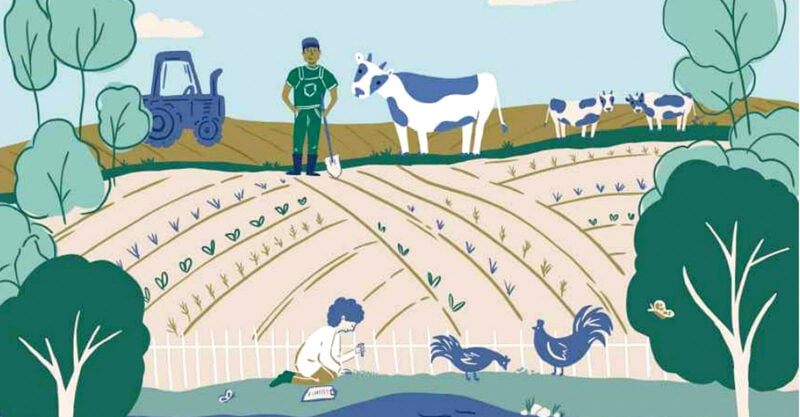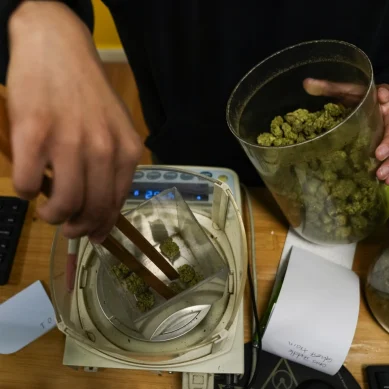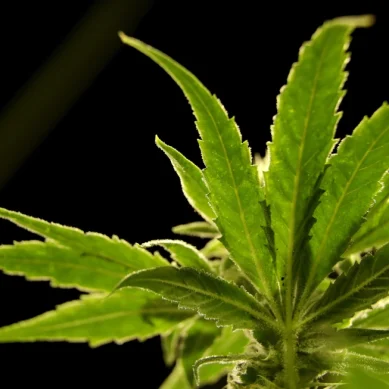
The longest-running – four-decade – investigation comparing organic and conventional grain-cropping approaches in North America is reporting impressive results for organic.
Recently announced in the Rodale Institute’s Farming Systems Trial – 40-Year Report are these outcomes: Organic systems achieve 3-6 times the profit of conventional production.
Yields for the organic approach are competitive with those of conventional systems (after a five-year transition period). Organic yields during stressful drought periods are 40 per cent higher than conventional yields.
Organic systems leach no toxic compounds into nearby waterways (unlike pesticide-intensive conventional farming), use 45 per cent less energy than conventional and emit 40 per cent less carbon into the atmosphere.
Beyond Pesticides reported in 2019 on similar results, from the institute’s 30-year project mark, which have been borne out by another three years of the trials.
The current report builds on results from the Farming Systems Trial that were shared in the Rodale Institute’s 2020 white paper, Regenerative Organic Agriculture and Climate Change: A Down-to-Earth Solution to Global Warming,” which integrated the newest research data and offered action steps for consumers, policymakers, farmers and others.
That report asserted that a global switch to a regenerative food system could not only provide sufficient food for the world’s population, reduce chemical exposures and improve biodiversity, but also, could be key to mitigating the climate crisis.
Through its longitudinal Farming Systems Trial, the Rodale Institute has collected data that measure differences in soil health, energy efficiency, crop yields, water use and contamination and nutrient density across test plots of grains grown in organic and conventional systems and using different levels of tillage.
The project focuses on grains (including wheat, corn, soy and oats) because they represent 70 per cent of US crops. On its 12-acre Pennsylvania parcel, the institute’s Farming Systems Trial uses 72 experimental plots, across which are applied three broad approaches:
Organic manure, representing a typical organic dairy or beef operation, featuring long rotations of annual feed grain crops and perennial forage crops, fertilised through legume cover crops and periodic applications of composted manure and using diverse crop rotations as primary defense against pests.
Organic legume, representing a typical cash grain operation, featuring mid-length rotations of annual grain crops and cover crops, deploying leguminous cover crops as the sole fertilizers and using only crop rotations as pest defense.
Conventional synthetic, representing a typical US grain-producing enterprise, using synthetic nitrogen fertiliser and controlling weeds with synthetic herbicides (according to recommendations of Penn State University Cooperative Extension).
Each of those three is further divided into “no-till” and “tillage” strategies (tillage being the practice of digging up, turning over, or otherwise agitating the soil with mechanical tools — typically a plough or disc). This yields six different systems in the Farming Systems Trial.
The Rodale Institute notes that, “No-till and organic no-till are not created equal. Conventional no-till utilises herbicides to terminate a cover crop, whereas organic systems use tools like the roller-crimper.
“We have found that organic no-till practices year after year do not yield optimal results, so our organic systems utilise reduced tillage, and the ground is ploughed only in alternating years.”
The Rodale Institute website adds that, in order to model standard agricultural approaches, genetically modified crops and no-till were introduced to the conventional plots in 2008 when those techniques became common in the US.
Beyond Pesticides has covered the adverse impacts of conventional no-till, which, as noted, generally uses herbicides to knock down cover crops (in addition to using them on the crop plants). This additional herbicide use can actually cancel out any greenhouse gas emissions saved through not tilling and can accelerate the development of weeds’ resistance to the herbicide compounds.
To what to attribute these demonstrated benefits of organic over conventional approaches? All these results, as Beyond Pesticides and the Rodale Institute have asserted for decades, begin with soil health.
“Healthy soil is that which allows plants to grow to their maximum productivity without disease or pests and without a need for off-farm supplements.
“Healthy soil is teeming with bacteria, fungi, algae, protozoa, nematodes and other tiny creatures. Those organisms play an important role in plant health [by helping plants fight diseases and pests].
“Soil bacteria produce natural antibiotics that help plants resist disease. Fungi assist plants in absorbing water and nutrients. Together, these bacteria and fungi are known as ‘organic matter.’ The more organic matter in a sample of soil, the healthier that soil is.”
Healthy soil retains more moisture, boosting plants’ ability to survive periods of drought; it binds together, supporting soil structure that more successfully wards off soil erosion and runoff into waterways.
And because organic systems don’t use chemical inputs, toxic compounds are not deployed into the environment, and fewer fossil fuels are used (because synthetic pesticides and fertilizers are derived from petrochemicals).
It is well known that organic practices increase organic matter in soils; but Farming Systems Trial data show that organic matter (and thus, soil health) in organic systems increases continuously over time, whereas in conventional agricultural systems, this does not happen and soil health remains essentially unchanged.
According to the Rodale Institute, such healthy, organically managed soils allow “15-20 per cent more water to percolate through soils, replenishing groundwater and helping organic crops perform well in extreme weather. More organic matter also means more total microorganisms that make nutrients available to plants for strong growth.”
The metrics used to determine a soil’s health include: the number of microorganisms present in the soil; the ability of the soil to retain water during drought or dry periods; the number and variety of nutrients present and the quantity of carbon the soil is able to hold.
By contrast, a more conventional view of soil sometimes sees it as little more than an “empty matrix” to which (chemical) inputs are added so that plants can survive, rather than as a living, evolving and interactive ecosystem that provides a rich growing environment for plants and many other life forms.
The Farming Systems Trial stands out as a singular research approach for multiple reasons, but chief among them is its longevity.
The Rodale Institute explains, “Short-term studies that take place over only a few years can’t measure longer-term weather effects, like drought, that will inevitably occur or biological changes to the soil, which can happen slowly. We need long-term studies to find real solutions to problems affecting the future of global food production.”
These results were good news three years ago; they emerge as even more important as the world grapples with a constellation of intersecting environmental and health crises.
- The Defender report











